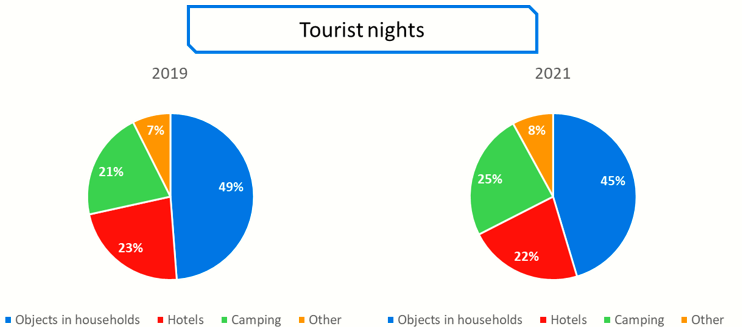Zagreb Airport Ground Handling Services Taken Over by Turkish Company
February the 14th, 2022 - All of the Zagreb Airport ground handling services have been taken over by a Turkish company. The move happened on the 10th of this month.
As Poslovni Dnevnik writes, back on February the 10th this year, a Turkish company (Havas) specialising in ground handling services became the owner of MZLZ Zemaljske usluge d.o.o., a company that has so far performed all tasks related to the reception and departure of passengers, cargo and aircraft at Zagreb International Airport.
This made Zagreb's Dr. Franjo Tudjman International Airport the 31st airport at which Havas provides ground handling services. In addition to airports in Turkey, Havas manages the reception and dispatch in Riga, and from February the 10th, it's been doing the same for Zagreb Airport ground handling services, as reported by Croatian Aviation.
Havas' General Manager, Mete Erna, said: “We're continuously focusing on the development of our operations through innovation, striving to provide the highest quality service to our partners, the airlines. Approximately 30 airlines operate regularly to Zagreb, and it is the main airport in Croatia, a globally known tourist country. By taking over the reception and departure services at Zagreb Airport, we'll increase the quality of the services and continue to invest in groundhandling services, for the benefit of passengers and airlines in Zagreb.''
Havas will provide reception and dispatch services for passengers at the airport, as well as cargo and mail in Zagreb with approximately 500 employees and with the support of 176 motor vehicles. Zagreb Airport also has an ISAGO certificate issued by IATA (Air Transport Association).
Back in the record year of pre-pandemic 2019, Zagreb Airport had 3.45 million passengers and 45,000 flights, and about 13,000 tonnes of cargo. Due to the impact of the global coronavirus pandemic, passenger traffic in 2021 was at 41 percent of the traffic from the record breaking year of 2019. The consortium of TAV Airports and ADP Group has the right to manage Zagreb Airport until the year 2042.
For more, make sure to check out our dedicated business section.
Customers Complain of Less Stock, Higher Prices at IKEA Zagreb
February the 14th, 2022 - IKEA Zagreb was a huge hit when it first arrived in the Croatian capital, more precisely on the outskirts of it in Rugvica. It seems however that for the past few months, many customers have been noticing a lack of items on the shelves and an increase in the prices. Just what's going on there?
As Novac/Jutarnji/Ana Franic/SD writes, the Swedish brand IKEA arrived in Croatia back in 2014, taking up home on the outskirts of the capital, and since then it has delighted most people with its proximity, ease of purchase, decent prices and delivery.
Those of us who live in Croatia had fallen in love with this gigantic Swedish store's extensive and fairly prices offer much earlier, but it was necessary to cross the border before it arrived in Zagreb. Simple but modern furniture at relatively low prices and all sorts of little things for the house are an assortment that is both necessary and irresistible.
When IKEA Zagreb opened its doors, many Dalmatians made a ''pilgrimage'' of sorts to this huge department store and regularly received a list of products from family and friends with which to return home from shopping, writes Slobodna Dalmacija.
People outside of Zagreb eagerly waited for their purchases to arrive and in those years, suppliers who transported IKEA Zagreb goods to destinations throughout the resr of Croatia also made some very good money. Dalmatians were even more relieved back in 2017 when a delivery centre was opened in Split. In just a few clicks, fans of the Swedish brand could get their hands on their favourite things, and to add to that - delivery was made entirely free.
However, over more recent months, loyal IKEA Zagreb customers have noticed an increase in prices, but also the fact that a lot of products are not in stock at the Zagreb department store at all anymore.
''My apartment is like from the IKEA catalog. Everything I need for the house, whether it is furniture, utensils or decorations, I find and purchase with them. Everything is reasonably priced, but the quality is far from lacking. As I'm a big fan of IKEA, lately I've noticed that some of their products have become more expensive, but also that a lot of what they sold is not available,'' one woman from Split said, adding that she's not sure if those issues are due to coronavirus or something else.
''For example, I recently looked for an extra bed, but none of those that caught my eye were available. At first it meant nothing to me, until I continued to search for the products I needed. Baskets were also not available, nor were their scented candles, nor were part of their range of kitchen utensils,'' she went on to explain.
She's not the only one, either. After all, it's enough to look at the offer on the IKEA Zagreb website and notice that a lot of products are in the "red", that is, that they aren't in stock. Private renters are most affected by this, hoping that before the tourist season stocks will be restored and that they will be able to equip their rental apartments on time.
What exactly is happening with the IKEA Zagreb product offer and whether there has been an increase in prices?
''We'd like to point out that we continue to invest a lot of effort to keep our prices as low and stable as possible. However, the current situation with international trade and restrictions on raw materials affects all industries around the world, and IKEA is no exception. Procurement and transport costs are rising after the disruption in logistics, and the growth of raw material prices is at such a level that we couldn't avoid the increase in retail prices for many of our products,'' they explained from IKEA.
They added that some of their prices in their portfolio have been increased to reflect the current rising raw material and supply chain prices, adding that the prices of many of their products have remained the same, and some have even been reduced.
''The increase in prices of individual products ranged from a few percentage points to a low double-digit percentage, while the average price increase in Croatia was 9 percent,'' they explained. When it comes to the supply and availability of their products, they said that since the beginning of the coronavirus pandemic, there has been an increase in demand for their products because, as they say, people want to improve their lives at home as they were spending much more time within their four walls pre-vaccine.
''But during the last year of the pandemic, the global situation with the capacity of ocean traffic has created challenges for all companies dependent on it, including the business of IKEA. Continuous disturbances, port congestion and historically high demand have created an imbalance in the overall ocean freight market, resulting in limitations in our business. IKEA is closely monitoring the development of this situation across all fields so that it can adequately respond to all challenges. We prioritise our range to ensure that IKEA products, which our customers love and need the most, are available online and in our department stores. We want to thank our customers for understanding that not all products may be available at this time, and we'll certainly continue to take further action to increase product availability and provide customers with an even better IKEA experience,'' they concluded from IKEA Zagreb.
For more, check out our lifestyle section.
Croatian Government Inflation Measures: Lower VAT, Vouchers...
February the 14th, 2022 - The crisis surrounding rising energy prices across not only Croatia but the rest of Europe and indeed the world is continuing to throw proverbial spanners in the works for many and causing growing concern for companies and business. Croatian Government inflation measures are set to be rapidly introduced as a result of the spiralling situation which poses very little good for the domestic economy.
As Poslovni Dnevnik writes, at some point in the middle of next week, new Croatian Government inflation measures aimed at maintaining the standards of the country's residents due to high inflation, will be introduced. The move will now be being anticipated by many as the situation continues to unfold in a negative light.
RTL Television published the first hints about what these Croatian Government inflation measures might look like when they come into force:
Most of the measures are aimed at the most vulnerable people among us, therefore it has been announced that special vouchers to cover the difference in rising bill amounts will amount to more than 200 kuna at a time, and that they could also be extended to a larger circle of users during this inflation crisis.
The Prime Minister's Advisor for Economic Affairs, Zvonimir Savic, confirmed that there will be a reduction in the VAT rate, a topic which has been being talked about in many sectors for a very long time now. VAT on energy will be reduced, and state-owned suppliers will have to give up part of their earnings as a result of that.
However, it has not yet been decided whether these new Croatian Government inflation measures will reduce the VAT on gas down to 13 or a very welcome 5 percent.
On top of that, we do know that the tax placed on basic food products - eggs, flour, sugar, milk and the like - will be reduced from 13 to 5 percent.
For more, check out our dedicated politics section.
Zadar Digital Nomad Valley: You Should Go
February 14, 2022 - TCN is delighted to welcome one of the rising stars of the digital nomad scene. Community builder extraordinaire Dean Kuchel on his impressions of two weeks at Zadar Digital Nomad Valley.
Not enough. That’s how I sum up my visit to the recently opened - Digital Nomads Valley in Zadar, a hotel & campsite turned into a small village for remote professionals and digital nomads.

During my two weeks stay in January 2022, I was one among 15 nomads. Group of young guys & girls, some single, some with a partner, from places like Israel, Poland, United Kingdom, Germany, Czechia, and Syria.
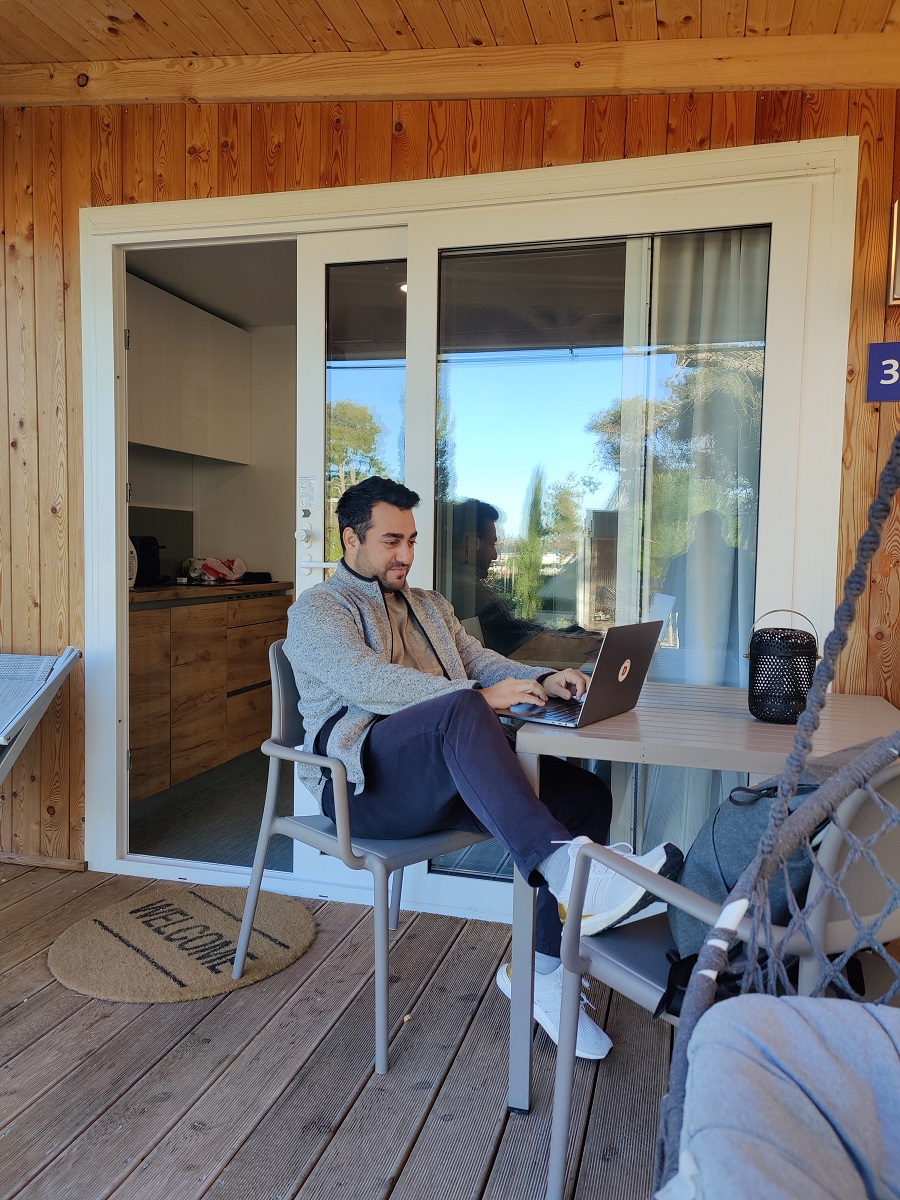
On the day of arrival, I was greeted by the community manager, who handed me the key to my studio unit and gave me a tour of the valley - the cowork, restaurant, bar, gym, pool, spa, beach, laundry, and parking - all within the perimeter of the valley, or 1 to 5 minutes walk.
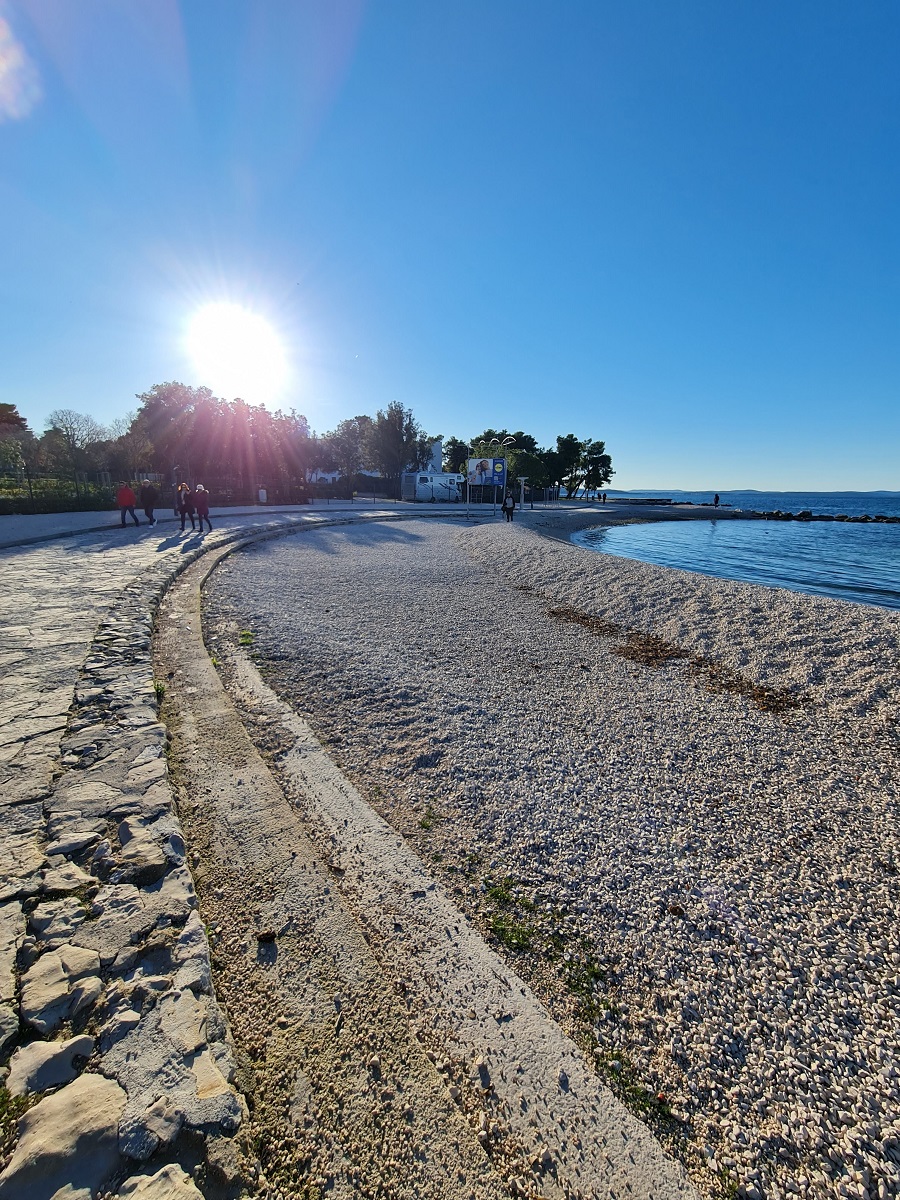
My room was a 20 square meter apartment, with a balcony, kitchenette, and dining-work area. There is also a large TV for those who watch, and a bonus Bluetooth speaker embedded in the ceiling, great for those “dance like nobody's watching” moments.
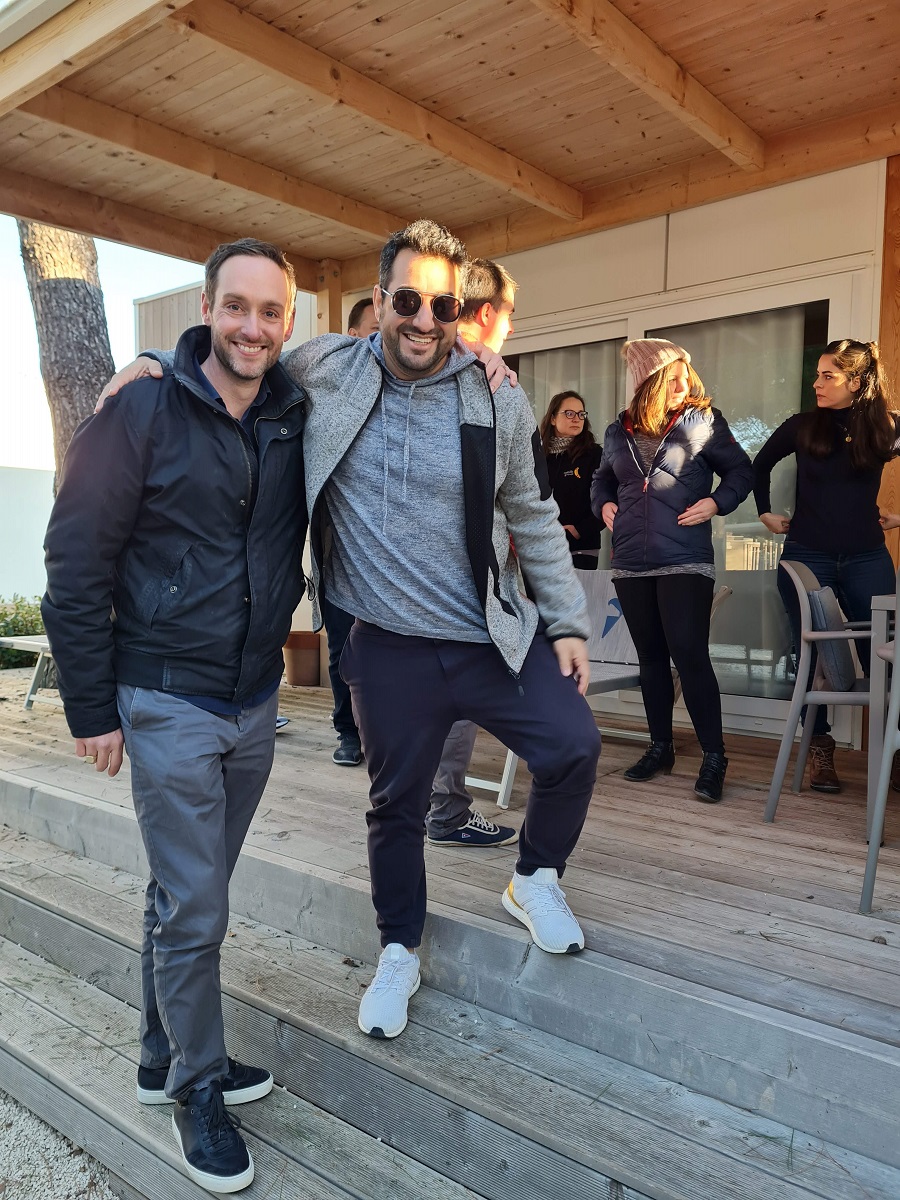
It is more than enough space for a single person. For couples or friends, the Valley offers a 2 or 3 bedroom unit.
The amenities are excellent, it’s really everything one needs, and all one wants. It is so convenient to jump between the gym, spa and the cowork, I made it my routine right after I unpacked my suitcase for the duration of my stay.

It is probably the best-equipped co-live I stayed in, but it would be unfair to call it a co-live, since the valley is first and foremost a community. The people I met were the highlight of my stay, and the reason I was sad to leave, - we, humans, we get attached to people, not places.
The valley attracts like-minded people who understand what the digital nomad lifestyle is about, celebrate it, and openly discuss the challenges.
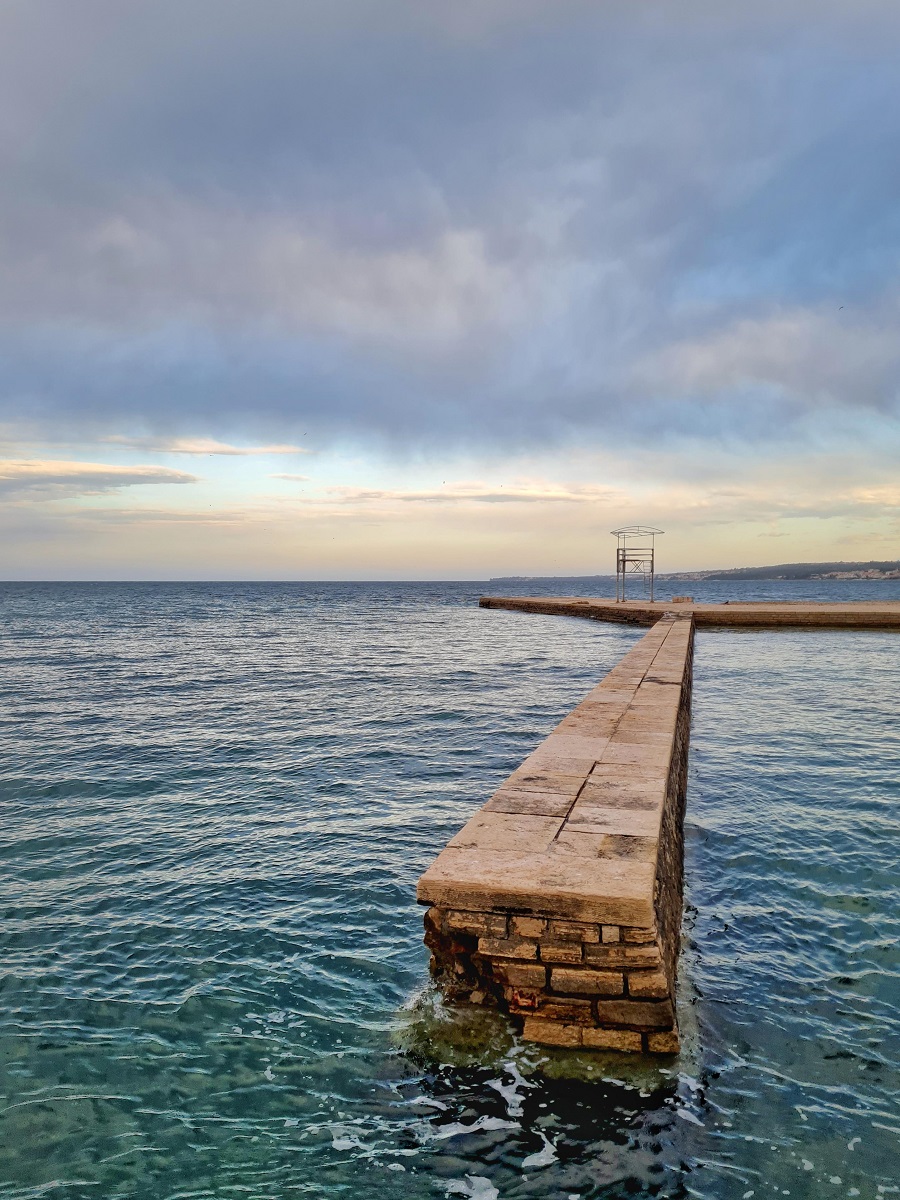
A group of strangers turned into close friends, travel buddies and business consultants within a few days.
We jumped together to the cold water of the sea, we dined together, and had long co-working sessions followed by happy hour, workouts, movie nights, and day trips to nearby islands - Croatia is rich in nature, and we made sure to take advantage of it.

I am not new to the digital nomad lifestyle, I’ve been living of a single carry on for over 8 years now, traveled to 100+ countries in the process, and created a vast network of connections and friends, yet, the sensation of staying at the valley was different, it felt familiar, it felt like I belong there, or had been there before - it felt like a good old routine.
A word about Zadar, the city hosting the valley.
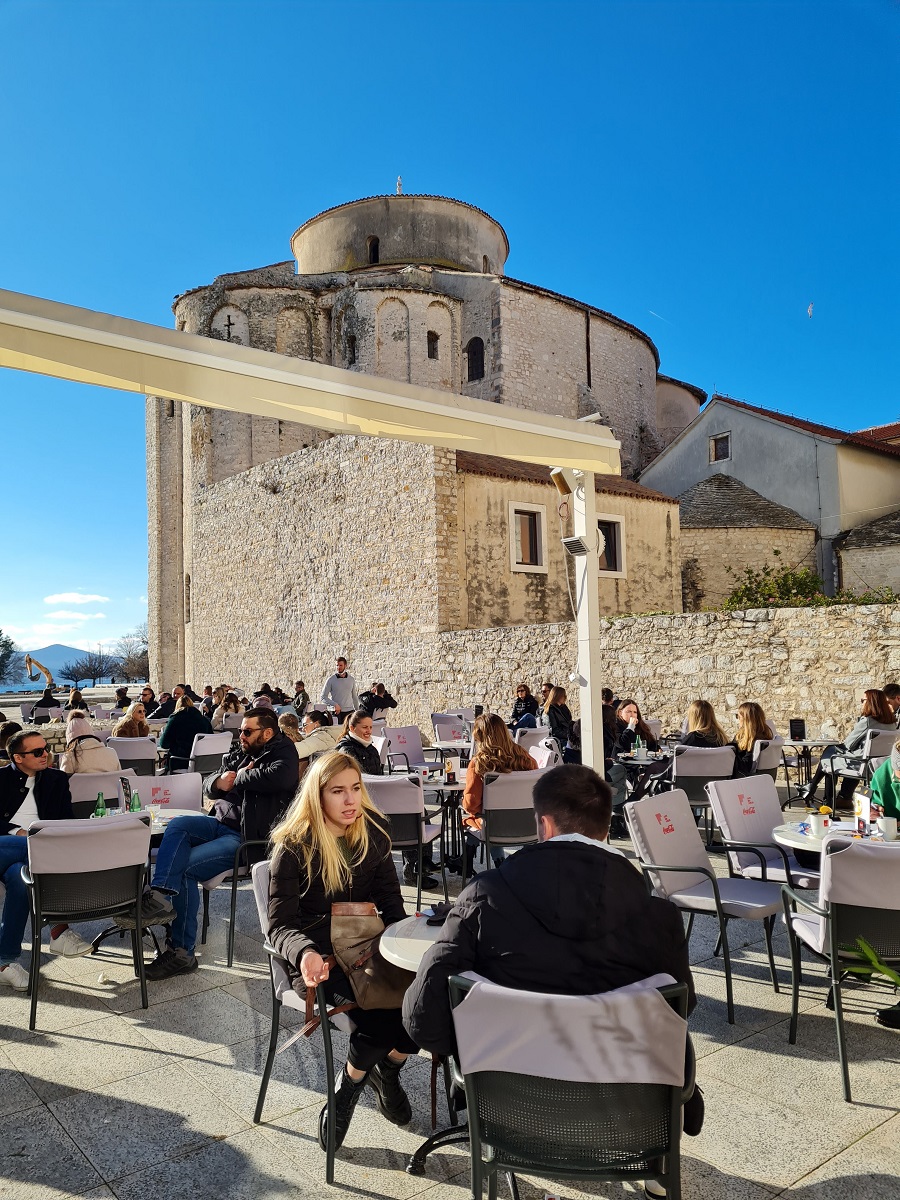
Zadar is the 5th largest city in Croatia, home to around 70,000 people. The land is kissing the sea on one side, and looking over a chain of mountains to the other side, the views are beautiful anywhere you look.
Old town Zadar is five minutes taxi ride away, that’s where many cafes, bars and restaurants are tucked between the old city walls. The city has its own magic, it can be romantic, and it can be wild. The options are all there
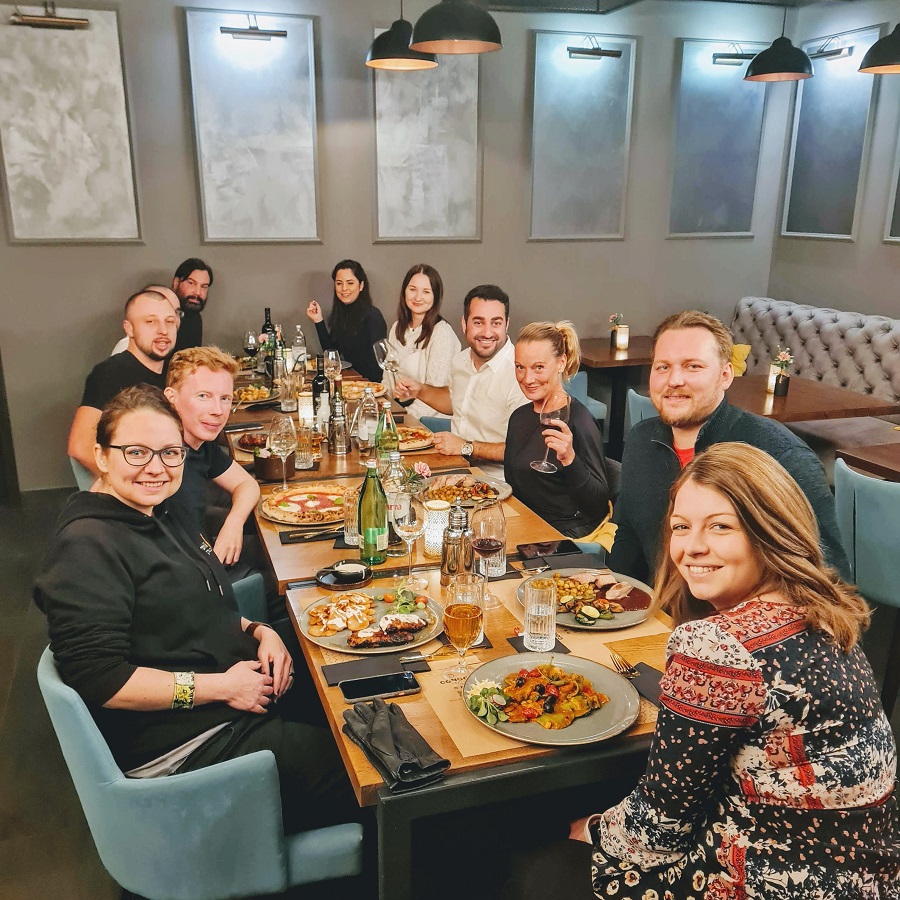
The 2nd largest city in Croatia, Split, is an 1.5 hour drive away, and Zagreb, Croatia’s capital is a short 3 hours bus ride, if you choose to hit the road - you will be rewarded with beautiful landscape throughout the drive.
So why do I summarize my experience with ‘not enough’?
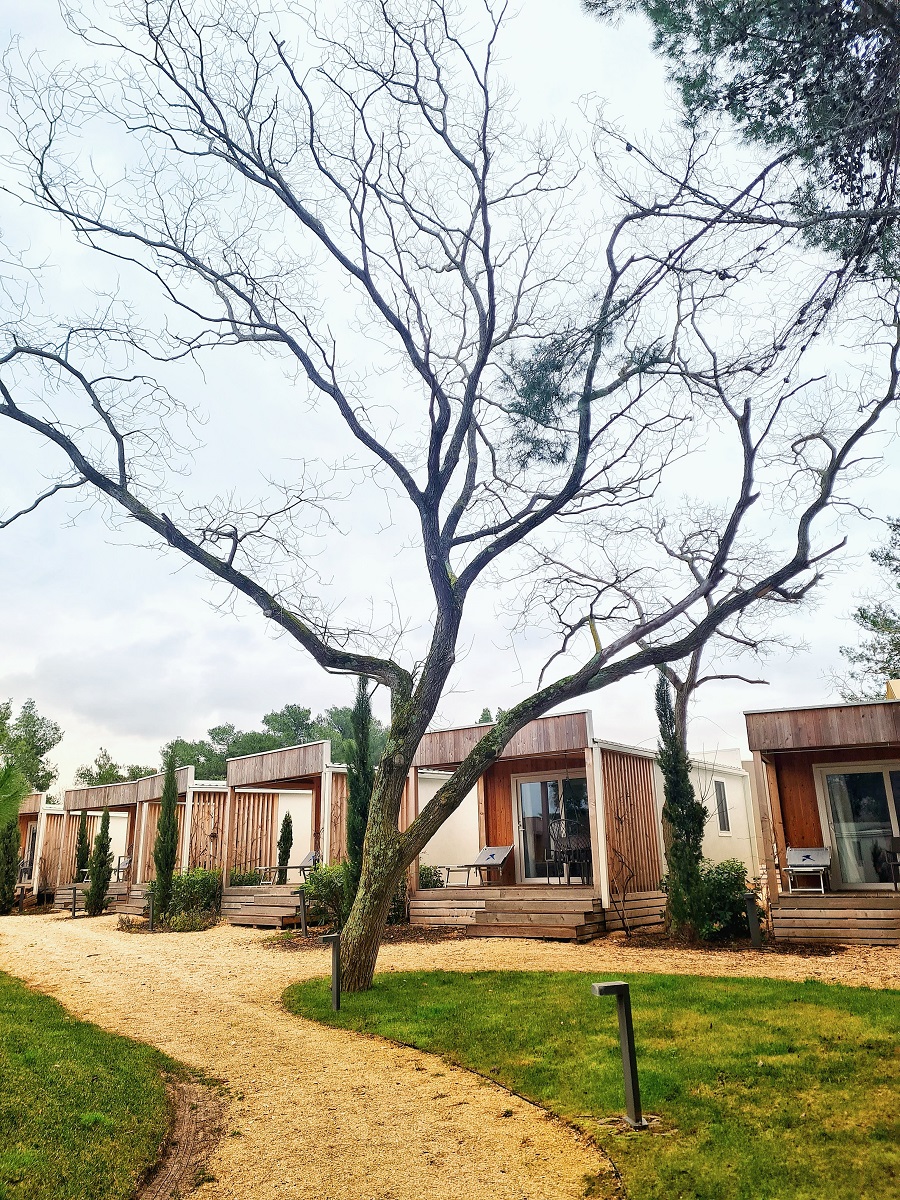
Simply because my two weeks were not enough time to enjoy it all, live it to the fullest, make the best of it, and too early to say goodbye to my new friends.
If you go, and I encourage you to do so, consider staying a solid month, if not longer.
You will fall in love, I promise you.
Digital Nomad Valley in Zadar is what a co-live should be like, and what a community should feel like, I will be back and will be staying way longer this time.
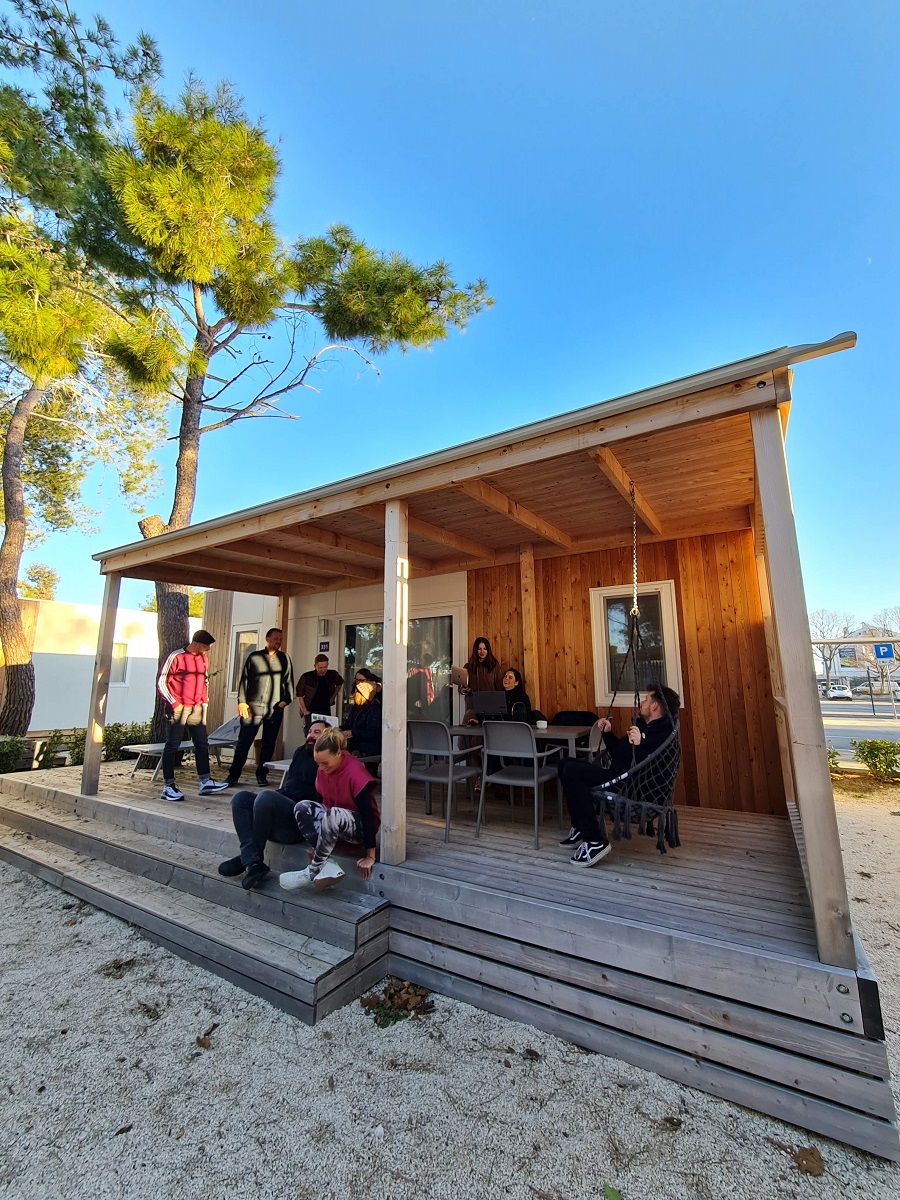
Say YES! Go Explore,
Dean Kuchel
King of Digital Nomads
Instagram: https://instagram.com/where_is_dean/
LinkedIn: https://www.linkedin.com/in/nimroddeank
For more news and features on digital nomads in Croatia, check out the dedicated TCN section.
Croatia Water Polo Gathers for Next 2022 World League Match against Russia
February 14, 2022 - The Croatia water polo team gathered at the Aristos Hotel in Zagreb on Sunday to begin preparations for the 2nd round of the 2022 World League in Zagreb. Croatia and Russia will face off in Group D on Tuesday, February 15.
The list of 17 players has not changed, except for minor modifications.
"Goalkeeper Marko Bijač will join on the day of the match. Ivan Krapić will not compete in the match after an injury in the previous round of the World League, though he is with the team and training normally, just like Konstantin Kharkov, who does not have the right to play yet. Ante Vukičević and Loren Fatović have just come out of isolation due to coronavirus, but they are also at the preparations," said coach Ivica Tucak.
The Croatia-Russia match is scheduled for Tuesday, February 15 at 6 pm at the Mladost swimming pool in Zagreb, and can be watched live on the FINA YouTube channel. Croatia trained in the late afternoon-evening period on Sunday, two training sessions are planned for Monday, and another relaxing one on Tuesday morning before the match.
Croatia is in the European Group D of the World League. In the first round, Croatia beat Greece 12:11 away, and with a victory against Russia, it would confirm its placement in the final European tournament of the World League, which will be held in Budapest from April 28 to 30, 2022.
Croatia lineup
GOALKEEPERS
Marko Bijač (Olympiacos)
Ivan Marcelić (Jadran)
Toni Popadić (Jug Adroatic osiguranje)
CENTERS
Josip Vrlić (Radnički)
Ivan Krapić (Noisy-le-Sec)
Lovro Paparić (Vouliagmeni)
ATTACKERS
Luka Bukić (Jadran)
Ante Vukičević (Marseille)
Loren Fatović (Jug Adriatic osiguranje)
Franko Lazić (Mladost)
Ivan Domagoj Zović (Szolnok)
Andrija Bašić (Palermo)
DEFENDERS
Hrvoje Benić (Jug Adriatic osiguranje)
Marko Žuvela (Jug Adriatic osiguranje)
Rino Burić (Jadran)
Kristijan Milaković (Szolnok)
Matias Biljaka (Mladost)
COACHING STAFF
Coach - Ivica Tucak
Cssistant coach - Zoran Bajić, Jure Marelja, Frano Vićan and Igor Pezelj
Conditioning trainer - Pero Kuterovac
Physiotherapist - Damir Luketić
To read more about sport in Croatia, follow TCN’s dedicated page.
HNL Round 23 Recap: Last-minute Dinamo Win, Hajduk 111th Birthday Victory, Osijek Tops Rijeka 1:0
February 14, 2022 - The 23rd round of the Croatian First League was held from February 11 to 13, 2022. This round saw Dinamo defeat Gorica in the final minute, while Hajduk's 111th birthday victory pushed them into 3rd place ahead of Rijeka. Here's our HNL round 23 recap.
Šibenik v. Hr. Dragovoljac (0:5)
The 23rd round opened on Friday, February 11, 2022, between Sibenik and Dragovoljac in Sibenik and was perhaps the most shocking game of the round.
The last-placed Dragovolac scored three goals in the first half thanks to Karrica (19'), Bristric (22'), and Majstorovic (45+3'). Galesic opened the second half with an early goal to make it 0:4 in the 49th minute before Frigan scored for 0:5 in the 75th.
Sibenik is currently in 7th place with 23 points, while Dragovoljac is in 10th with 10.
Lokomotiva v. Istra 1961 (1:1)
Lokomotiva and Istra met on Saturday, February 12, 2022, in Zagreb.
While the first half went without goals, Lokomotiva'ss Salihu was booked for a double yellow at the end of the first half, forcing Lokomotiva to play with a man down for the remainder of the match. Drena Beljo put Istra in the lead in the 54th minute for 0:1, though Kulenovic equalized for 1:1 in the 80th minute.
Lokomotiva is currently in 6th place with 28 points, while Istra is in 9th with 22.
Dinamo v. Gorica (2:1)
On Saturday, February 12, 2022, Dinamo and Gorica met at Maksimir stadium.
While the first half went without goals, Ademi put Dinamo ahead in the 55th minute for 1:0. Kalik equalized less than 10 minutes later for 1:1. Finally, Orsic gave Dinamo the victory with a last-minute goal in the 89th for 2:1.
Dinamo is currently in first place with 49 points and a game in hand, while Gorica is in 5th place with 29 points.
Hajduk v. Slaven Belupo (3:1)
Hajduk and Belupo met on Sunday, February 13, 2022, at Poljud stadium. It was also Hajduk's 111th birthday.
Nikola Kalinic made his re-debut for Hajduk on Sunday and played a part in the first goal, which Sahiti scored for 1:0 in the 13th minute. Grgic increased Hajduk's lead to 2:0 in the 26th. Zapata gave Belupo some hope in the 52nd minute with a goal for 2:1, but a double yellow for Bosec 10 minutes later had Belupo playing with a man down for the rest of the match. Livaja scored a penalty in the 71st for the final 3:1.
Hajduk is currently in 3rd place with 44 points and a game in hand, while Belupo is in 8th with 23.
Osijek v. Rijeka (1:0)
Osijek and Rijeka closed out the 23rd round with a derby on Sunday, February 13, 2022.
The first half went without goals, and an own goal by Cestic decided the winner in the 85th minute. Rijeka's Abass was booked for his second yellow in the 3rd minute of stoppage time.
Osijek is currently in 2nd place with 46 points, while Rijeka dropped to 4th with 43.
You can see the full HNL standings HERE.
To read more about sport in Croatia, follow TCN’s dedicated page.
Camping Tourism in Croatia: An Overview
February 14, 2022 - Camping tourism in Croatia - an overview of how it competes against other accommodations in the country.
Camping tourism in Croatia has not received much attention throughout the years, but its significance as part of Croatia’s tourism offer cannot be neglected. The history of camping in Croatia dates back to 1934, when the first unofficial naturist camp was opened on the island Rab in Yugoslavia. In the beginning, camping in Croatia was closely related to naturism tourism. In 1953, there were 18 camps in Yugoslavia, and half of those were located in Croatia. Back then, 70% of tourists were domestic tourists from Yugoslavia, which shows that camping was very appealing for the local population in this early stage.
As the years went by, the camping industry evolved, and in 2019, which was a record-breaking year, it accounted for 2,9 million tourist arrivals and 19 million tourist nights in Croatia. Camping as a tourism sector or as an accommodation type includes camping sites, small camps, quick stops, in both private facilities, and households and family farms. Camping holds the second position in the number of permanent beds by accommodation type with 20,4%, while objects in households hold first place with 49.6%. However, it should be noted that beds in camps are not just actual beds but also include beds that can be brought to the camp by tourists in the form of a tent or caravan. Therefore, when looking at tourist arrivals, we can see that Camping as a category is usually in the third place. On the other hand, Hotels and Camping generally fight for second place when observing tourist nights, with camping being third in 2019 and second in 2021.
Camping has a higher average length of stay than hotels and objects in households. For example, in 2021, the average length of stay in camping was 6.7 days compared to objects in households (6.5 days) and hotels (3.8 days). This is why camping’s relative proportion of tourist arrivals is smaller than the proportion of tourist nights. What is more, when looking at 2021, we can see that Camping experienced the fastest comeback, reaching 88% and 91% of tourist arrivals and nights respectively, as compared to the all-time high in 2019. For comparison, all types of accommodation (not including nautical and non-commercial accommodation) have reached 66% and 78% of tourist arrivals and nights, respectively. This can be interpreted by the resilience of camping as a touristic sector in the context of the current pandemic. Additionally, it can also be a sign of growth in this sector, which Croatia should be ready to exploit to its advantage.
In 2019, 346 camping sites and camping grounds were established according to the NKD classification. These establishments had a combined number of 258 rooms, 141 apartments, and 93,513 camping grounds. Out of these 346, there are 224 camping sites observed according to several stars, similarly as hotels are categorized.
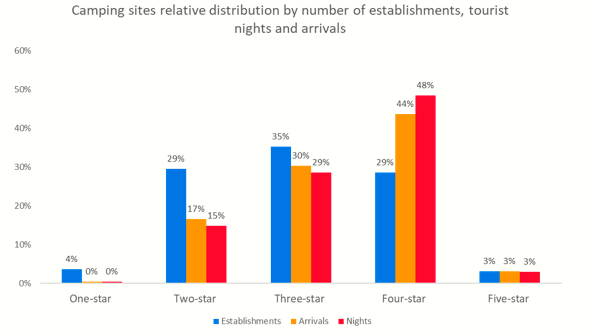
Camping sites accounted for 94% of arrivals and 95% of tourist nights in the total camping accommodation category. We can observe that camping sites with 2, 3, and 4 stars dominate this sector from the table above. Interestingly, four-star campsites account for 29% of all campsites but 44% and 48% of tourist arrivals and nights, respectively. This can be interpreted in a way that camping tourists are looking for higher quality services and are willing to pay for them.
The occupancy rate of permanent beds, measured monthly, shows us that Camping has a similar occupancy rate as objects in households but with a greater seasonality effect. Seasonal character is more or less expected since camping involves spending a lot of time in the open. Hence, it is very dependent on weather factors and the outside temperature. The occupancy rate of permanent beds should be taken with a grain of salt since the methodology of counting permanent beds is very specific in the case of camping when compared to other categories.
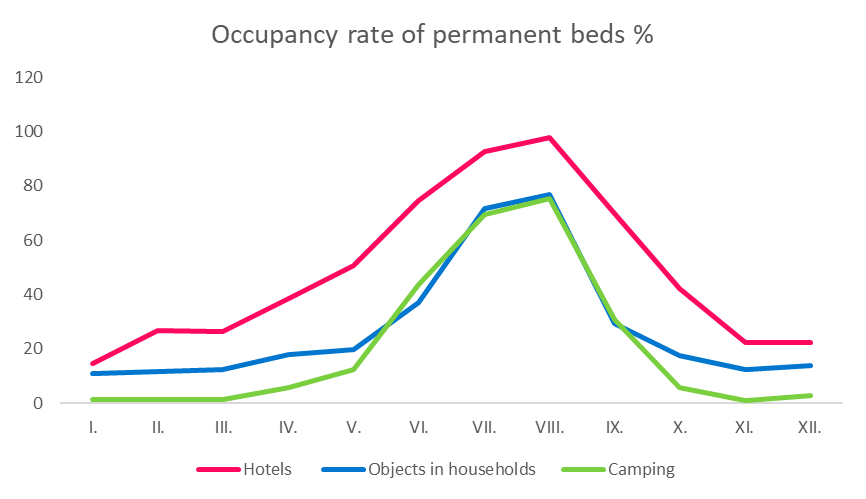
Camping tourists are predominantly foreign tourists, with foreign tourists accounting for around 97% of both tourist arrivals and nights. This is also considerably higher than other categories: Hotels (85%, 89%) and objects in households (92%, 93%). In the table below, we can observe which countries accounted for the biggest share of tourist arrivals and nights in camping.

Germany, Slovenia, Austria, and Italy cumulatively account for approximately 70% of all tourist nights and arrivals in camping accommodation units. Interestingly, one-third of all German and Slovenian tourists spend their holiday in Croatian camps. Dutch tourists account for the highest percentage, with 40% of arrivals and more than half of tourist nights are spent in camps.
Types of resorts and regional distribution
According to DZS, resorts can be divided into four categories: Zagreb, Thermal, Seaside, Highland and mountain, and Other resorts. In 2019, Seaside resorts accounted for 95% of arrivals and 98% of tourist nights. We see a distinctive concentration of camps in the northern part of the Adriatic region when looking at counties. Istria and Primorsko-Gorski Kotar county has the highest concentration of camps, cumulatively accounting for 68% of all camping capacity.

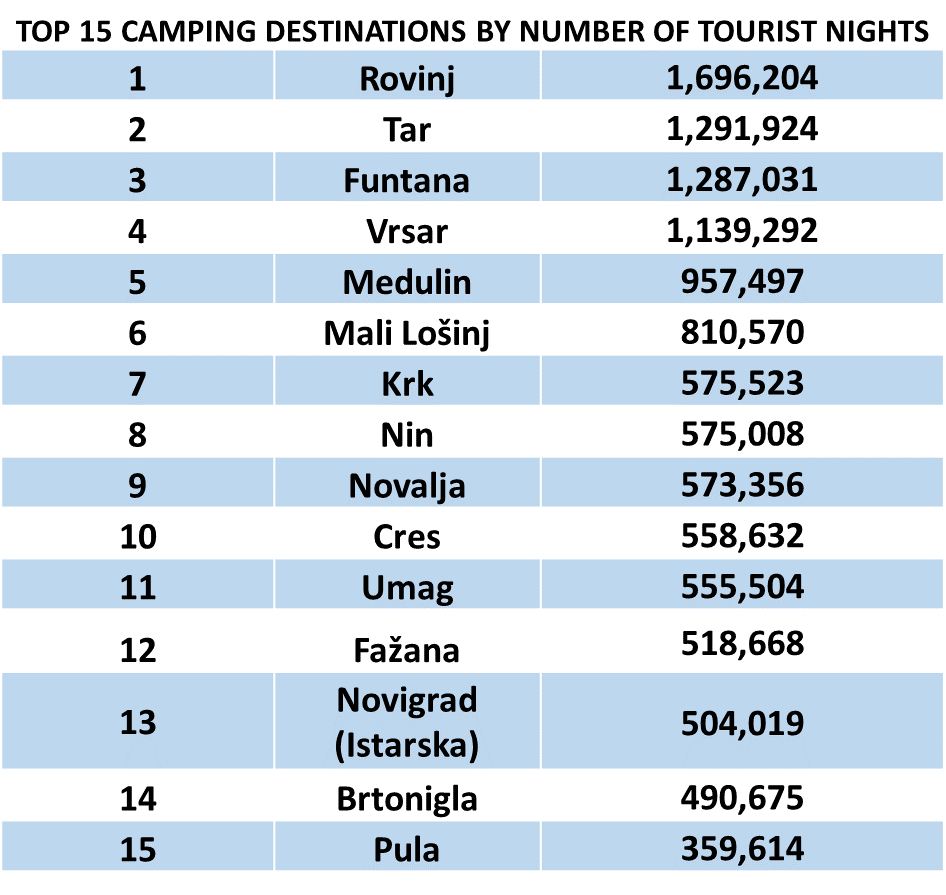 The list of top 15 destinations by the number of tourist nights confirms the extremely high concentration of camping establishments in the northern Adriatic regions.
The list of top 15 destinations by the number of tourist nights confirms the extremely high concentration of camping establishments in the northern Adriatic regions.
TOMAS – research
From the TOMAS research of attitudes and consumption of tourists in Croatia, which was conducted from 2017 – 2020, we can derive powerful insight into the characteristics of camper tourists. Campers and caravans are the third biggest mode of transportation with 11.4%, lagging behind cars 60% and airplanes 20%. Compared to other types of accommodation, Camper tourists are to a larger extent motivated by natural beauties and sport & recreation. Additionally, they are characterized as more loyal guests, with several repeated visits being substantially larger on average compared to other types of accommodation. Campers spend more time than an average tourist swimming and playing water sports but are less interested in sightseeing and gastronomy. The average daily spend of a camper tourist is on average lower than other tourists, both in 2017 and in 2019/2020. In this period, camping tourists have experienced the slightly largest increase of all observed tourists by accommodation type.

From 2009 to 2019, the number of camping facilities grew by 49% and permanent beds by 28%. For comparison, the number of hotel facilities increased 87%, and their permanent beds grew by 68%. At the same time, the number of facilities and number of permanent beds in the category of objects in households increased by an astonishing 1134% and 2019%, respectively. We can see that objects in households dominate, which is expected considering the rising trend of private accommodation and lower capital investments characteristic of this accommodation category.
Camping has a long tradition in Croatia, and its development will undoubtedly continue in the future. However, camping is the most underrated category out of the three most essential accommodation categories. It could be argued that the underdevelopment of camping infrastructure in some parts of Croatia is why Croatia has not yet realised camping's full potential. The Northern Adriatic region is leading the development in this accommodation category. Time will tell whether or not the southern parts of the Adriatic region and continental Croatia will join in.
Data mentioned in this article is derived from the statistical reports, databases, and other resources from HTZ and DZS.
Additionally, some information has been used from the paper Kamping u Republici Hrvatskoj, Gordić Vedrana.
For more on travel in Croatia, follow TCN's dedicated page.
Conference on the Future of Europe: Citizens Call for Joint European Army, No Veto in Foreign Policy Matters
ZAGREB, 13 Feb 2022 - EU citizens attending the Conference on the Future of Europe on Sunday called for establishing a joint EU army, taking decisions on foreign policy issues by qualified majority, and adopting a common migration policy.
A total of 184 citizens from all EU member states met in Maastricht on Friday and Saturday to formulate through smaller working groups, policy proposals on the topic "EU in the world and migration". They voted on the proposals on Sunday, with a majority vote of 70% being required for their adoption. Only six of 46 recommendations were not adopted.
EU citizens called for establishing joint EU armed forces and also called for changing the way decisions on foreign policy issues are made.
Currently each member-state has a right of veto and EU citizens recommended making decisions by qualified majority, which is a major bone of contention between the proponents and opponents of further EU integration.
Its opponents believe it is a step towards turning the EU into a federation where the strongest members would be able to impose their own will more easily, while its proponents stress that unanimous decision-making prevents the EU's affirmation as a global actor comparable with the USA and China.
Still, they propose that one should continue to make decisions on the admission of new members and changes to the Treaty on EU unanimously.
On the issue of EU enlargement, citizens concluded that it was necessary to consolidate the EU's identity before new members joined.
They also proposed facilitating the introduction of sanctions against member-states, organisations and individuals violating the Treaty on EU.
In favour of common migration policy
EU citizens also advocated a common EU migration policy based on solidarity. They also called for replacing the Dublin Regulation with a new legally binding regulation to secure a just, balanced and proportional distribution of asylum-seekers.
They recommended establishing a single European mechanism for the import of labour outside of the EU in line with market needs, as well as strengthening the border protection agency, Frontex, and reviewing its work so far.
They underlined the need for greater transparency to prevent abuse in the treatment of migrants.
EU citizens also proposed greater production subsidies in the European farm, health and digital sectors, as well as in environmental protection technologies. They also recommended reducing dependence on natural gas and oil, and instead make larger investments on public transportation infrastructure and alternative energy sources such as hydrogen.
They called for restricting imports from countries that tolerate child labour, as well as greater control of possible human rights violations in the production of imported goods. They also proposed introducing "eco-rating" for all products to include the level of CO2 emissions from production and transport, the level of harmful substances, etc.
Previously, as part of the Conference and after a panel debate in Warsaw, citizens adopted conclusions on health and climate policies, while at their first December panel in Florence they put forward policy proposals from the area of EU values and security.
The last panel will be held in Dublin, and recommendations from 800 EU citizens, chosen randomly by market research agencies to reflect the EU's demographic and socioeconomic structure, will be considered by European institutions at a joint plenary session.
A total of 80 citizens, 20 each from the Conference's four panels, will discuss the proposed policies with members of the European Parliament, representatives of EU governments and parliaments, European commissioners, representatives of unions, employers, civil society and others, at the plenary session of the Conference on the Future of Europe.
For more on politics, follow TCN's dedicated page.
For more about Croatia, CLICK HERE.
Commercial Accommodation Facilities See Large Increases in December and All of 2021
ZAGREB, 13 Feb 2022 - A total of 70.2 million bed nights were generated in commercial accommodation facilities in Croatia in 2021, 72% more than in 2020, with 63 million or 78% generated by foreign tourists, leading to a 297.6% increase in bed nights generated by foreign visitors in December.
In addition to the huge increase in bed nights compared to 2020, 12.8 million or 82.5% more tourists stayed in commercial accommodation facilities in 2021, and of that,10.6 million were foreigners, a 92% increase year-on-year, show data from the Croatian Bureau of Statistics (DZS).
In 2021, 2.1 million domestic tourists stayed in commercial accommodation facilities, or 46.6% more than in 2020, generating 7.3 million bed nights, up 36% from 2020.
December very good in terms of tourism results
In December 2021 alone, 117,400 domestic tourists stayed in commercial accommodation facilities, a 151% increase year-on-year, generating 227,200 bed nights or 123.2% more bed nights year-on-year.
An even greater increase on the year was generated by foreign tourists in December - there were 118,600 arrivals, an increase of as much as 656%, and 326,700 bed nights, an increase of 297.6%. Most bed nights were generated by Slovenians, Austrians, Germans, Russians and Italians.
Zagreb was among the most popular destinations visited in December, accounting for almost 29% of the total bed nights in that month, followed by Opatija and Split.
Hotels generated the most bed nights in December (54.3%), which was 4.7 times more than in December 2020, followed by rented rooms, apartments and holiday homes.
For more, check out our dedicated travel section.
Study Shows 20% of Secondary School Students Exposed to Online Sexual Harassment
ZAGREB, 13 Feb (Hina) - As many as 20% of secondary school students have witnessed or experienced online sexual harassment, and nearly half have seen their peers share sexual content via chat, a profile or forum, according to results of a DeShame study.
The study has shown that children and young people send and receive sexual content (sexting) from people they know and from strangers. Nearly 40% of young people have received sexual content, about 10% of students send their own sexual content, and some of them do so persuaded by another person, because of blackmail or a threat.
Sexting, sexual harassment and violence have become a part of many young people's lives in Croatia, said Lucija Vejmelka, the research leader and professor at the Social Work Study Centre of Zagreb's Faculty of Law.
Sexual behaviour still taboo
"Sexual behaviour is still taboo, so children and young people don't turn to adults when they have a problem, while exposure to sexual harassment has short-term and long-term consequences for the victim. High exposure to violence can seemingly normalize such behaviour, which increases peer pressure and makes intervention more difficult", warned Vejmelka.
Young people are most often exposed to derogatory expressions and descriptions, sexual jokes and sexual jokes and comments about another person getting likes.
Occasionally, they are witness to sexual photos of persons their age being shared, websites or groups on social networks being created for sexual content or gossiping, and photos or videos of sexual intercourse of someone they know being shared, of which only 20% of them spoke up.
Girls experience sexual harassment more often, while young people in general most often experience gossips and lies about their own sexual behaviour.
The study was conducted by the Safer Internet Centre (CSI), with the support of A1 Hrvatska, and 2,016 students of the first and third year of secondary schools across Croatia took part.
The results were presented as part of an event marking Safer Internet Day, and the study was also carried out in Denmark, Hungary and the United Kingdom.
For more news about Croatia, CLICK HERE.



